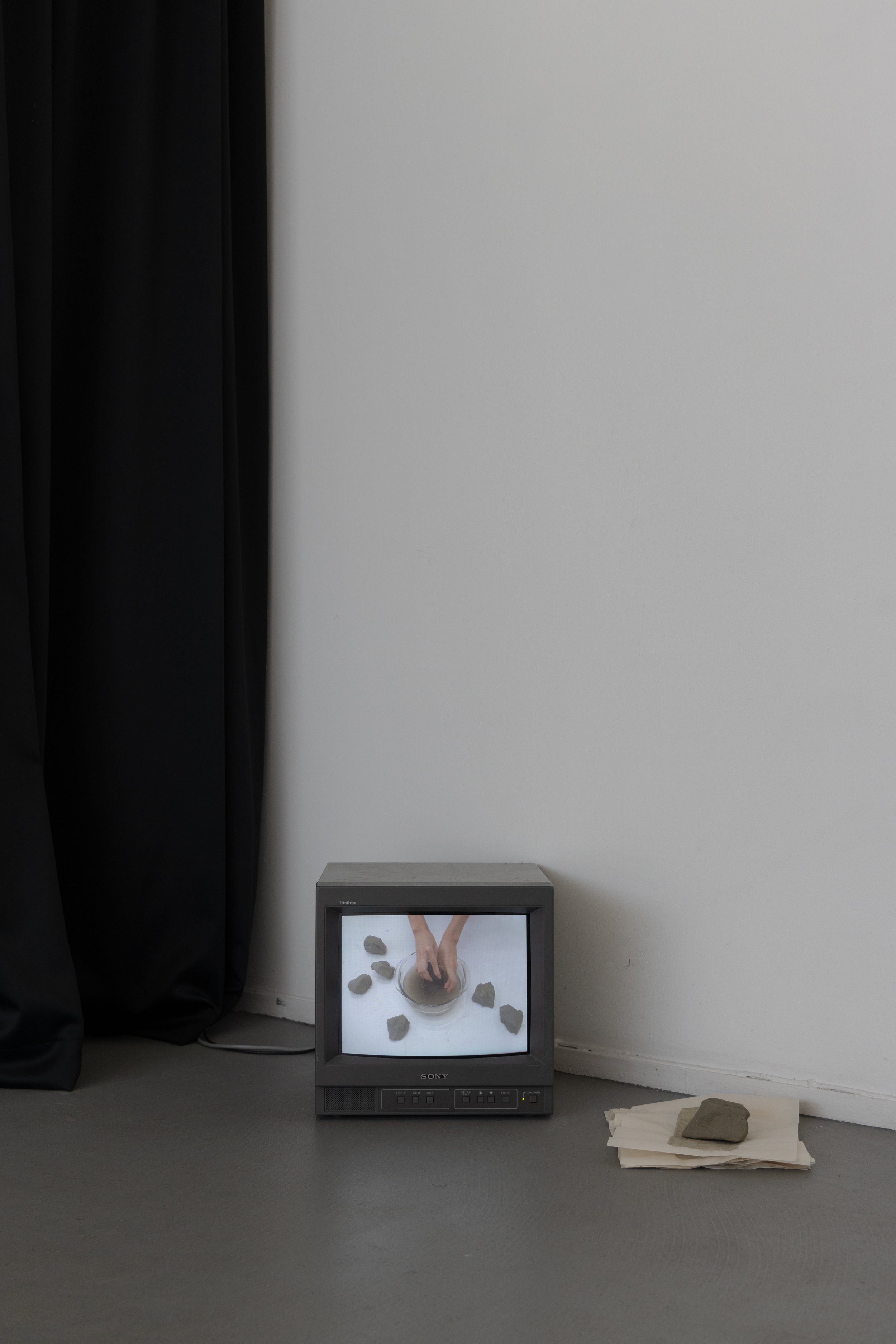Notes On: Utility
Connie Brown on Zoe Thompson-Moore’s Open-field; RM Gallery, 23 November – 17 December 2022.
What can be made of use-value beyond utility? Zoe Thompson-Moore’s Open-field perambulates and fence-hops this question with a collection of sculptures presented at RM Gallery.
Technological indeterminism is one possible name for its methodology: function is the open-field in question, but also the starting point for imagining what systems and values we might like to co-create and cohabit for the world. Many of the works motion towards a world built upon intensive and intentional craftspersonship and a committed zero-waste policy. All of Thompson-Moore’s making is a form of gleaning or rescue: in her studio, even kale stalks can be rethought before they are left to the compost pile; and even the compost pile has potential other-lives. Using traditional craft techniques like smocking and plying, she transforms coffee sacks, bread bags and other salvaged materials into novel objects of unspecified or latent purpose (though to be sure, the bread bag twine, knotted into a no 8. wire-like fence, won’t make a particularly obdurate barrier).
Just as often though, beyond utility lies uselessness. What should we do with the rusted nails, curved like caterpillars, that are arranged in a circle formation on the gallery’s floor? Likewise for the garden fork whose shaft has been replaced with another piece of knobbly kale stalk? Beautiful, but not much good for digging kikuyu.
These objects point us toward something like what Paul Lafargue wrote of in The Right to be Lazy—a text trained on the “capitalist creed of usefulness,” Marxism’s own overestimation of labour-as-virtue, and the three-hour working day as the ultimate anti-capitalist position.[i] Like Lagargue, Thompson-Moore endorses the right to be useless and nonproductive, which is also the right to be resourceful and imaginative. She also extends this right to her materials.
Single-useness and planned obsolescence are essentially paradigms for the division of labour to which objects are beholden—determining (and curtailing) their function, lifespan and creative potential. Open-field emancipates objects from this regime of disposability with the same gestures that emancipate the maker/user from unremitting productivity. A synthesis of the land and the tools that work it undergirds the exhibition. Formally, it plays on the now-familiar language of the non/human, but it neither extols the bucolic utopia these modes can be too quick to adopt, nor concedes it entirely to utilitarianism. Thompson-Moore’s is a troubled, un-optimised symbiosis within which idleness is as important as hard toil, and the open-field is as much there for playing in as for planting crops.
[i] Paul Lafargue, The Right to be Lazy, (Paris: Charles Kerr and Co., Co-operative, 1883).
All images: Zoe Thompson-Moore, Open-field. Installation view at RM Gallery, Tāmaki Makaurau, December 2022. Photography: Ardit Hoxha






















Connie Brown on Zoe Thompson-Moore’s Open-field; RM Gallery, 23 November - 17 December